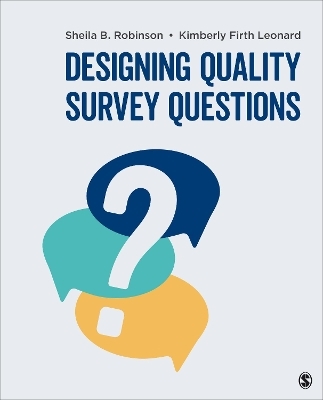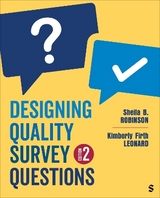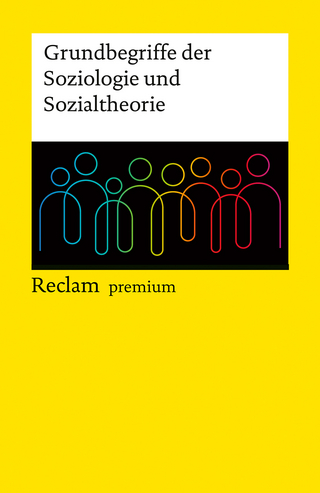
Designing Quality Survey Questions
SAGE Publications Inc (Verlag)
978-1-5063-3054-9 (ISBN)
Surveys are a cornerstone of social and behavioral research, and with the use of web-based tools, surveys have become an easy and inexpensive means of gathering data. But how researchers ask a question can dramatically influence the answers they receive.
Designing Quality Survey Questions shows readers how to craft high quality, precisely-worded survey questions that will elicit rich, nuanced, and ultimately useful data to help answer their research or evaluation questions. The authors address challenges such as language preferences for standard demographic questions (e.g. How to ask about gender), creative question design to keep respondents engaged and avoid survey fatigue, web-based survey formats, culturally-responsive survey design, and factors that influence survey responses (memory, social desirability, etc.). Numerous examples of questions illustrate each identified principle of question construction.
Sheila B. Robinson, Ed.D is an educator, program evaluator, and professional development workshop facilitator whose survey design experience began with assessment design in K12 public education. She is often an invited keynote speaker and workshop presenter at professional conferences, consultant with educational and other organizations on survey design and program evaluation, and adjunct professor of graduate courses in both program evaluation and professional development design and evaluation. Sheila is an active member of the American Evaluation Association (AEA); she is past chair of AEA’s Pre-K12 Educational Evaluation Topical Interest Group, Lead Curator for AEA’s blog Tip-a-Day-by and For Evaluators, and Coordinator of AEA’s Potent Presentations Initiative. Sheila and her husband live in Rochester, NY. Kimberly Firth Leonard, MPA, has built, administered, and taught others about surveys for more than a decade, primarily in the context of program evaluation. Kim is currently the Senior Evaluation Officer at the Oregon Community Foundation where she manages evaluations of several large grant-making initiatives, each of which includes at least one survey-based data collection component. Kim is an active member of the American Evaluation Association (AEA) and was president of the Oregon Program Evaluators Network in 2013. Kim lives in Portland, Oregon, with her husband, their new baby girl, two dogs and cat.
Preface
Why This Text
What This Text Is
What This Text Is Not
Who Can Benefit From This Text
Navigating This Text
A Note About Language
Acknowledgments
About the Authors
Chapter 1. WHY Quality Surveys and Questions Matter
What Is a Quality Survey?
Why Does Quality Matter?
Why Do We Need a Purposeful Survey Design Process?
Applying Design Thinking to Survey Research
A Purposeful Survey Design Process
An Iterative Process
Discussion Questions
Design Drills
Extended Learning
PART I. WHAT TO CONSIDER BEFORE DRAFTING SURVEY QUESTIONS
Chapter 2. Planning and Predrafting
Why Survey? The Importance of Establishing Purpose
What Will Be Measured? Understanding Constructs and Indicators
Wait, Do You Really Need a Survey?
What Can Be Measured With a Survey?
What Are the Advantages and Limitations of Surveys?
Discussion Questions
Design Drills
Extended Learning
Chapter 3. Understanding Respondents
Cognitive Tasks Involved in Answering Questions
Respondent Willingness and Ability to Participate in a Survey
Context and Culture
Discussion Questions
Design Drills
Extended Learning
PART II. HOW TO DEVELOP SURVEY QUESTIONS AND RESPONSE OPTIONS
Chapter 4. Sourcing and Crafting Questions
Sourcing Survey Questions
Composing Question Stems
Avoiding Problematic Wording and Question Types
Open-Ended Questions
Closed-Ended Questions
Discussion Questions
Design Drills
Extended Learning
Chapter 5. Constructing Response Options
Determining Appropriate Response Options
Strategies for Designing Response Options
Discussion Questions
Design Drills
Extended Learning
Chapter 6. Special Purpose and Sensitive Questions
Questions With Special Purposes
Sensitive Questions
Demographic Questions
Discussion Questions
Design Drills
Extended Learning
PART III. KNOWING WHEN A SURVEY IS READY FOR USE
Chapter 7. Finalizing Questions and Using Pretesting Strategies
Why Pretest Surveys and Their Questions?
How Can Surveys and Their Questions Be Tested Prior to Use?
Discussion Questions
Design Drills
Extended Learning
Chapter 8. Pulling It All Together to Maximize Response
Survey Instructions
Order Effects
Formatting the Survey
Contacting Potential Respondents
Planning for Administration
Discussion Questions
Design Drills
Extended Learning
Appendix: Checklist for Quality Question Design
Glossary
References
Index
| Erscheinungsdatum | 11.07.2018 |
|---|---|
| Verlagsort | Thousand Oaks |
| Sprache | englisch |
| Maße | 187 x 231 mm |
| Gewicht | 480 g |
| Themenwelt | Sozialwissenschaften ► Soziologie ► Allgemeines / Lexika |
| Sozialwissenschaften ► Soziologie ► Empirische Sozialforschung | |
| ISBN-10 | 1-5063-3054-1 / 1506330541 |
| ISBN-13 | 978-1-5063-3054-9 / 9781506330549 |
| Zustand | Neuware |
| Haben Sie eine Frage zum Produkt? |
aus dem Bereich



